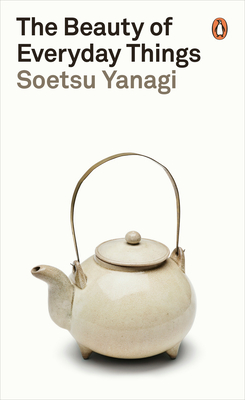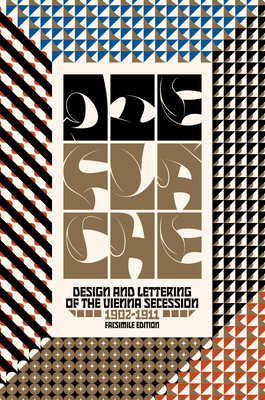




A witty, tongue-in-cheek discussion of design's potentials and pitfalls
In focusing on creating preferable conditions, the discipline of design is optimistic by default. And yet, vernacular manifestations of skepticism, dissatisfaction and even resentment toward design abound. Instead of systematically discarding them, can these sad passions shed a valuable light on the blind spots of the field? Can disillusion be something more than disillusionment? Can it become an emotional method to unveil design's dysfunctions and contradictions?
Author Silvio Lorusso looks into historical and present manifestations of design disillusion to shorten the gap between expectations and reality when it comes to the everyday practice of designers. Using humorous and irreverent visuals, often containing jokes about design, Lorusso constructs thoughtful dichotomies on such topics as synthesis and autonomy, power and impotence, and aspirations and compromise. The result is an amusing yet academic consideration of the design profession and its future.
Silvio Lorusso (born 1985) is the author of Entreprecariat: Everyone Is an Entrepreneur. Nobody Is Safe. He holds a PhD in Design Sciences from the Iuav University of Venice, and is an assistant professor and vice-director of the Center for Other Worlds at the Lusófona University in Lisbon.

A definitive survey of mid-century modern design and architecture in an accessible compact edition, this book offers a rich overview of one of the most popular, collectable, and dynamic periods of design. With rich and diverse examples of everything from furniture and lighting to ceramics and textiles to graphics and posters to interior design and architecture, this sleek compendium of mid-century style includes over 1,000 illustrations representing classic designs and little-seen rarities, as well as entries on nearly 100 major creators, such as Dieter Rams, Robin Day, Isamu Noguchi, Lucie Rie, Charles and Ray Eames, Alvar Aalto, and Oscar Niemeyer. An additional illustrated dictionary features hundreds more influential mid-century designers, manufacturers, organizations, schools, and movements.
Organized into three parts--Media and Masters, with six sections on applied arts; Houses and Interiors, featuring twenty seminal homes and their furnishings; and an A-Z of Designers and Makers--and complete with thirteen specially commissioned essays by renowned experts, this illustrated book is a must-have for collectors, design aficionados, and anyone seeking inspiration for their home.




A landmark of graphic modernism, the Vienna Secession's magazine is brought to life in a complete facsimile reprint with new essays and translations
The brainchild of Koloman Moser, Alfred Roller, Josef Hoffmann, Bertold Loffler and others--the leading graphic artists of the Vienna Secession and the Wiener Werkstätte--Die Fläche (German for The Surface) laid out an extraordinary group vision for design through adventurous work by these designer-professors and more than 100 of their students. Packed with bold ideas for posters, advertisements, book covers, woodcut prints and much more, the result is an inexhaustibly rich sourcebook of graphic forms, modern ideas and technical experiments, all reflecting a reorientation in design practice and teaching that would resonate around the world.
This full-size facsimile of all 14 issues of Die Fläche lets readers experience this rare gem as it was meant to be seen, while new essays and translations explore its significance.
Die Fläche is the first volume in Letterform Archive's facsimile series, which presents landmarks of print and design history with exacting reproductions and new essays that provide rich context and fresh insights.


The iconic dress that has stood the test of time.
Contemporary yet classic, the little black dress never goes out of style. Popularized by Coco Chanel in the 1920s, the style freed women from the corset and became the epitome of liberation. Dubbed the 'Ford of fashion' by American Vogue, it was simple, stylish and affordable - 'the frock that all the world will wear'. Tracing the fascinating evolution of the LBD, from Audrey Hepburn's sleek Givenchy sheath in Breakfast at Tiffany's or Princess Diana's rebellious 'revenge dress' right through to the mesh detailing and body-sculpting shapes of recent years, this little book is a celebration of one of fashion's most iconic garments. 'One is never under dressed or over dressed with a little black dress.'


Sought-after, sophisticated and versatile, the Hermès carré is wearable art that never goes out of fashion. Unveiling the history and artistry of the brand's silk accessory from the first designs in the early twentieth century to today, this fashion story includes a detailed behind-the-scenes look at the artisanship involved at the company's ateliers in France, as well as reviews on different scarf designs, colour palettes, dates of issue and rarity (the 'Grail' scarves).
The book includes the collaborators who have helped in the creation of over 2,000 designs, including limited editions, anniversary and tribute scarves, with highlights from renown artists and illustrators such as Hugo Grygkar, Philippe Ledoux, Kermit Oliver and Annie Faivre (who hides a monkey in her designs). Here you will discover the fashion of scarf styles throughout the decades, how to wear and tie a scarf, and the scarf in film and popular culture, along with those who made the Hermès carré a hallmark of their own - such as Queen Elizabeth II, Grace Kelly and Jackie Kennedy Onassis.


Paula Scher: Works presents the most extensive monograph of Scher's career to date, featuring over three hundred projects from her early days in the music industry as an art director with CBS and Atlantic Records; through the launch of her first studio, Koppel & Scher; to her decades-long engagement with Pentagram.
Coedited by Tony Brook and Adrian Shaughnessy, the book organizes Scher's work chronologically into several thematic sections. It opens with a long interview with the designer, then moves into her record covers from the 1970s and '80s. Central chapters look at her innovative approach to identity design and environmental graphics and its impact on contemporary New York's urban fabric--as seen in work for clients such as MoMA, Charter Schools, the High Line, and Shake Shack--as well as her logos for global corporations and cultural institutions.
A large section on authorship is devoted to the designer's socially and politically motivated posters, New York Times Op-Ed illustrations, and campaign work. The book also provides the most up-to-date look at Scher's idiosyncratic, hand-painted maps, a prolific artistic practice that complements her still-growing graphic legacy, as well as her longstanding collaboration with The Public Theater, which spans over twenty years.


On the conditions and limits of critical thinking for design culture under capitalism
Design schools increasingly urge students to address social, political and environmental issues in their work. But who can afford to work in this way after graduation?
In a dynamic style that draws from multiple contributors, Who Can Afford to Be Critical? discusses the limits that affordability, class and labor impose upon the educational promise of holding a critical practice. Why do we tend to ignore the material and socioeconomic constraints that bind us as designers, claiming instead that we can be powerful agents of change? Instead of focusing on the dream of ethical work under capitalism, could we instead focus first on designers' own working conditions, as one immediate site for collective action? Over the course of four chapters, this publication delves into the modes of precarity in critical graphic work and possible paths toward emancipation from that position.

If you were accused of a crime, who would you rather decide your sentence--a mathematically consistent algorithm incapable of empathy or a compassionate human judge prone to bias and error? What if you want to buy a driverless car and must choose between one programmed to save as many lives as possible and another that prioritizes the lives of its own passengers? And would you agree to share your family's full medical history if you were told that it would help researchers find a cure for cancer?
These are just some of the dilemmas that we are beginning to face as we approach the age of the algorithm, when it feels as if the machines reign supreme. Already, these lines of code are telling us what to watch, where to go, whom to date, and even whom to send to jail. But as we rely on algorithms to automate big, important decisions--in crime, justice, healthcare, transportation, and money--they raise questions about what we want our world to look like. What matters most: Helping doctors with diagnosis or preserving privacy? Protecting victims of crime or preventing innocent people being falsely accused?
Hello World takes us on a tour through the good, the bad, and the downright ugly of the algorithms that surround us on a daily basis. Mathematician Hannah Fry reveals their inner workings, showing us how algorithms are written and implemented, and demonstrates the ways in which human bias can literally be written into the code. By weaving in relatable, real world stories with accessible explanations of the underlying mathematics that power algorithms, Hello World helps us to determine their power, expose their limitations, and examine whether they really are improvement on the human systems they replace.
